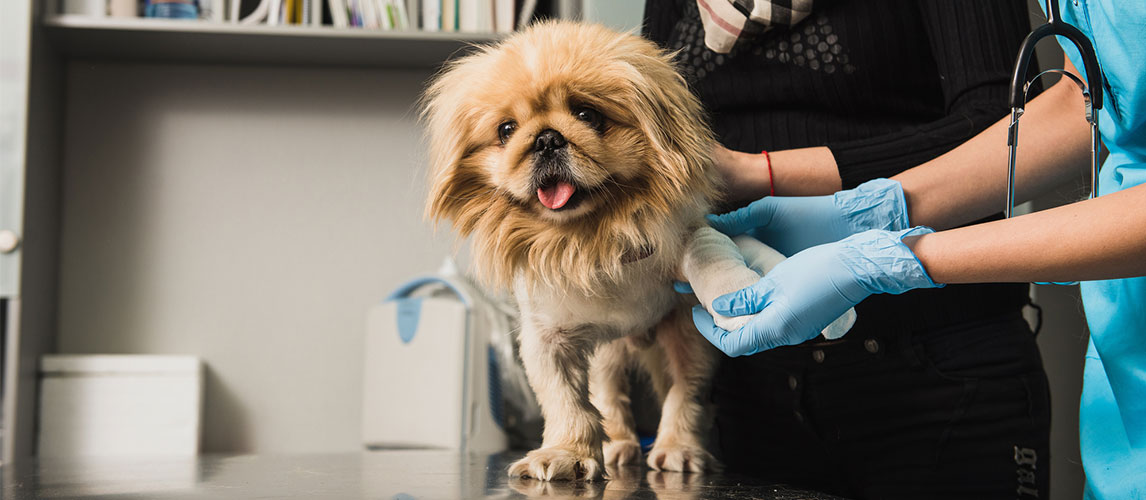There are many great activities that you can enjoy with your dog, and as the weather improves the great outdoors begins to call to many dogs and their owners. One way to enjoy the splendor of nature is to go hiking with your dog. When properly prepared and organized, this activity holds numerous benefits for you and your pet pooch. However, the key here is careful preparation. Finding yourself in the middle of a wilderness trail without food, water, or shelter is not fun, and could be potentially dangerous for your dog. So, with that in mind here are 10 essential tips to follow when hiking with your dog.
1. Put Your Dog’s Health First
You wouldn’t run a marathon without training or attempt an all-day trek if the furthest you ever walk is the local store, and the same should apply to your dog. If they are not used to long hikes, then build up their endurance with shorter hikes first. It’s also a great way of ensuring they enjoy the wilder surrounding and are not allergic to many common elements found on hiking trails.
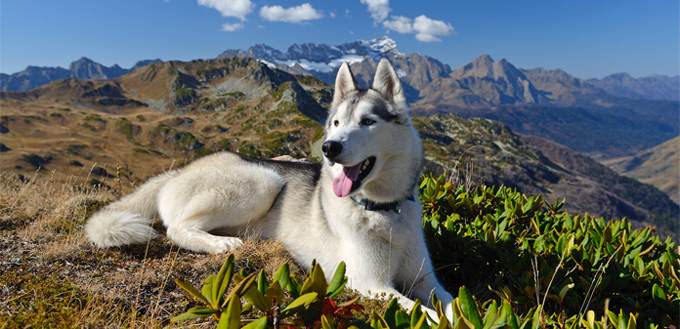
It is also a good idea to visit your veterinarian for a checkup before starting out on a new hiking season and ensure that all their vaccinations are up to date. Remember that there are limits on how long young puppies should walk for to avoid joint damage in later life; again, check this with your veterinarian.
If the terrain that you are likely to cover is rough, includes lots of loose or sharp stones, pine needles, or other elements that might damage your dog’s paws, then consider investing in dog boots before you set off. Quality dog boots, designed for trekking, are made to the same high quality as walking boots for humans and give your dog more grip on slopes and uneven ground, as well as protecting them from potential damage to their paws.
You May Also Like: Paw Protection Waxes For Dogs
2. Find the Perfect Trail
Not all hiking trails are suitable for dogs or even allow dogs on them. State parks tend to have greater restrictions than national or regional parks, but it is always best to check in advance. Also check for special events that might affect which trails you can access on specific days and whether your dog needs to be leashed on all or some of the trails. Don’t forget to map your intended trail journey and to let someone know where you are going and your expected return time, just in case of accident, injury, or simply getting lost on route.
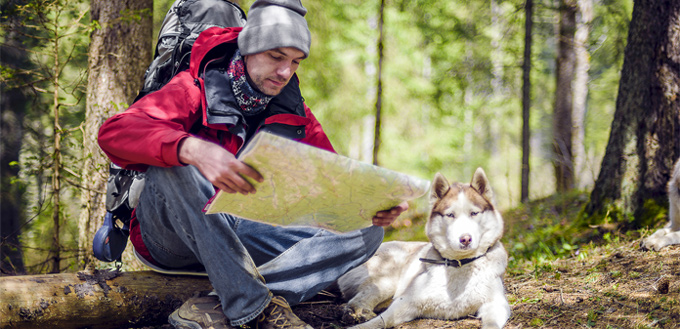
3. Respect Others and the Environment
Hiking with your dog is a great bonding activity, but you need to be aware that others will be using and enjoying the same trails and that the native wildlife also want to enjoy their environment. Many expert hikers never take their dogs off leash when hiking just because there are so many things that can go wrong and can do so very quickly. Even the best behaved dog may struggle to stay on the path and listen to commands if a squirrel suddenly appears. Bounding through the undergrowth not only puts them at risk of unseen dangers, but also puts habitats at risk, many of which are important to the wider eco-system.
If you do choose to let your dog off leash in permitted areas, then always ensure the trail is clear before you let them off. If you cannot see the trail ahead, then the chances are you won’t see potential dangers until it is too late. It also means that others on the trail cannot see you or your dog, which could be frightening for young children and potentially dangerous if you share the trail with other dogs or cyclists.
Related Post: Best Dog Basket for Bikes
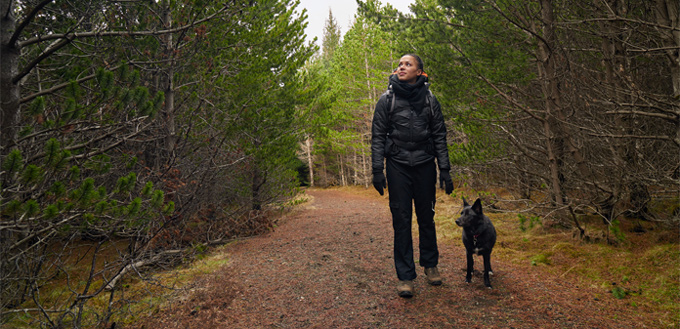
4. Be Aware of Wildlife
One aspect of your trail that you should always check is the kind of wildlife that is prevalent in the area. Knowing what wildlife lives in the area you are hiking through and the signs to look for can help you to prevent potential injuries and dangerous encounters. Small dogs for example are at greater risk from coyotes who are known to try and lure them away. Elk and deer, while generally not aggressive, have a very powerful kick and could injury your dog if they feel threatened.
Rattlesnakes are another consideration. Present in all the lower 48 states, they are generally shy and happy to remain hidden. However, they will attack if disturbed. It is important to keep your dog away from fallen trees and piles of dead branches and to take extra care in grassy areas adjacent to water sources such as streams and creeks.
If you are in an area inhabited by mountain lions or bears, then keeping your dog leashed is a must, both for their safety and yours. Other animals to keep an eye out for include skunks and porcupines; while not particularly dangerous they could ruin a perfectly good hike if they are disturbed. If you are unsure of how your dog might react to local wildlife, then a dog backpack carrier might be a good idea. It allows you to enjoy your hike with your dog but place them somewhere safe in areas that may not be safe or could cause them anxiety. They are also great for dogs whose stamina is not as great as yours.
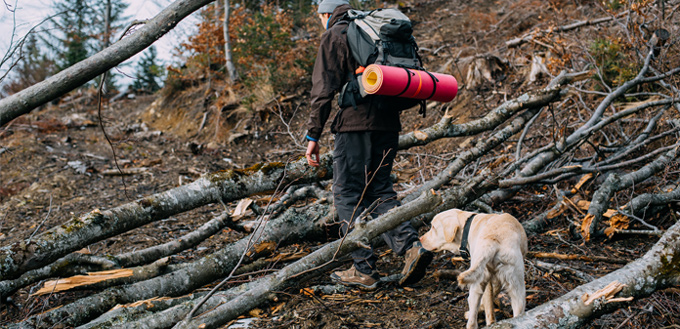
Related Post: Best Dog Leash
5. Using Dog Backpacks
It’s important to be prepared when you are hiking but carrying everything for you and your dog can be difficult. Luckily, there is help at hand. Dog backpacks allow your dog to carry at least some of their own provisions for the hike. Of course, to be successful with your dog backpack, you need to ensure that you get one that is suitable for the age, size, and breed of dog that you have. It is also important not to expect your dog to carry too much weight.
Generally, healthy working-type dogs and younger dogs can carry up to 25 percent of their body weight with no detrimental effect. However, for the greater majority of dogs the weight of their pack and its contents should be no more than 15 percent of their body weight. It is important to give your dog time to adjust to wearing the backpack before your hike. Place the empty pack on them for shorter walks over a few days, then add some weight for a few more walks, before finally packing for your hike.
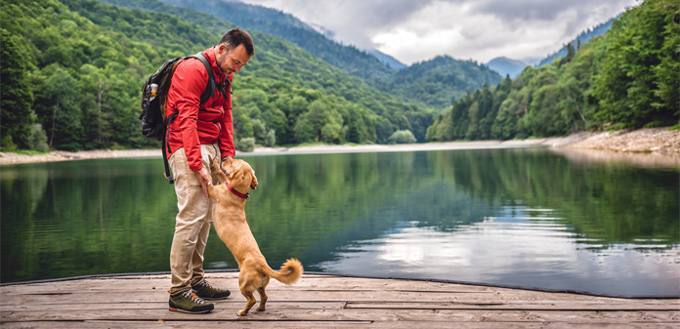
6. Remember a First Aid Kit
Accidents can happen regardless of how careful and well prepared you are, so it is a good idea to carry a basic first aid kit, even on the shortest of hikes. Items that you should consider adding to your kit include: topical disinfectant, gauze pads, liquid bandage, and tweezers. If you or your dog take any regular medication, then this should also be included. Ensure that your cell phone is fully changed and that your veterinarian’s phone number is on speed dial. While not technically a first aid item, you may also want to consider packing a dog cooling pad along with your emergency kit items. If your dog overheats it is important to get their temperature down quickly to avoid complications. A cooling pad can easily be laid out when you stop for a rest to help avoid potential problems further down the trail.
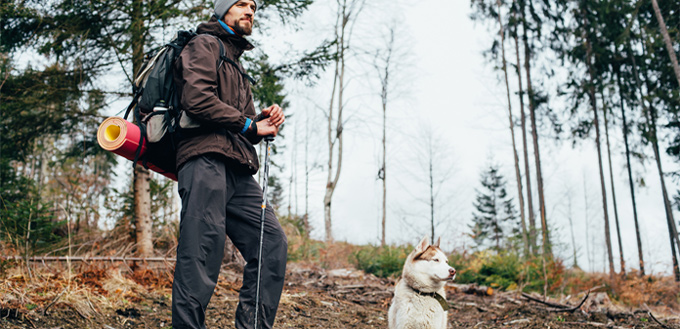
Related Post: Liquid Bandage for Dogs
7. Remember to Hydrate
Dehydration is always a concern when out walking with a dog as your pet pooch is much more susceptible than you are. Even if there are water sources on your trail there is no guarantee that they are safe to drink from. The giardia parasite lives in lakes and creeks and if ingested settles in your dog’s small intestine. It can cause a multitude of problems, so fresh water is a must. Taking a dog bowl is also a good idea as this means you can have the same water source for you and your dog. There are plenty of lightweight and collapsible dog water bowls and bottles available on the market, so being prepared does not have to add more weight to your pack.
As well as water for hydration ensure you carry dry food and dog treats. Hiking is hard work and just like you, your dog will need to replenish the energy they are expending on the hike. Treats are also a great way of encouraging and rewarding good behavior while out on your hike.
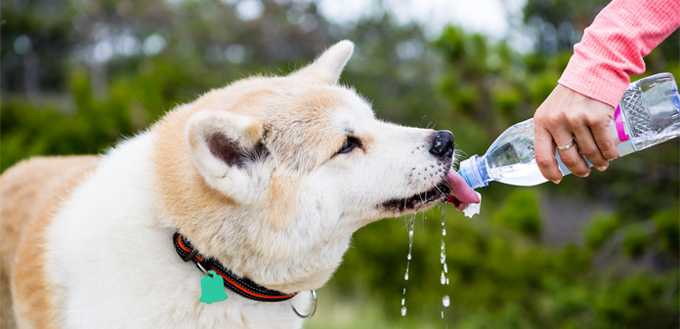
Related Post: Dog Bowls
8. Tackling Elevations
Some of the best hiking trails across the country take you to higher altitudes where the air is much thinner. While the views are amazing and worth the effort, care should be taken when tackling such trails. Take your time ascending the trail and walk at a steady pace; drink plenty of water as well. You also need to keep a close eye on your canine companion and watch for signs of altitude sickness. If they are slowing down significantly or panting heavily consider going back down to a lower altitude or giving them a longer rest.
If they do need an extended rest, then keep an eye on their body temperature. If it drops too low, you could have difficulties getting them warmed back up again. Packing a dog sleeping bag is a great way to keep their temperature up when needed. Such sleeping bags are design in a range of sizes and styles to fit even the largest dogs. They are easy to roll and pack, just like a human sleeping bag and are the perfect addition to any emergency kit.
Related Post: Best Dog Bike Trailers
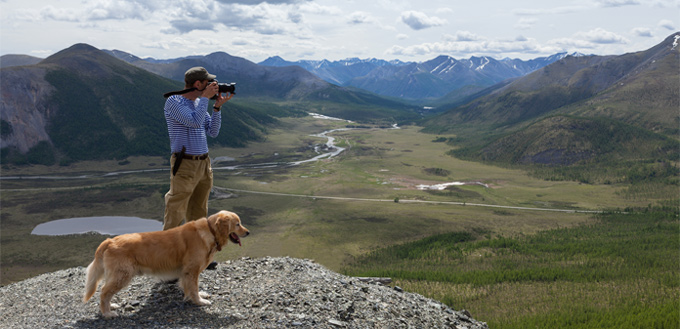
9. Cleaning Up
As well as ensuring you take any rubbish home with you or dispose of it responsibly at the end of your hike, it is important to ensure you clean up after your dog. There is little worse than treading in poo while out on a walk, and its even worse when it is not poo that you expect to find in the wilderness. Dog feces is also dangerous to others on the trail and could impact the local environment and wildlife. So, remember to pack the poop bags and to use them.
Related Post: Best Dog Poop Bags
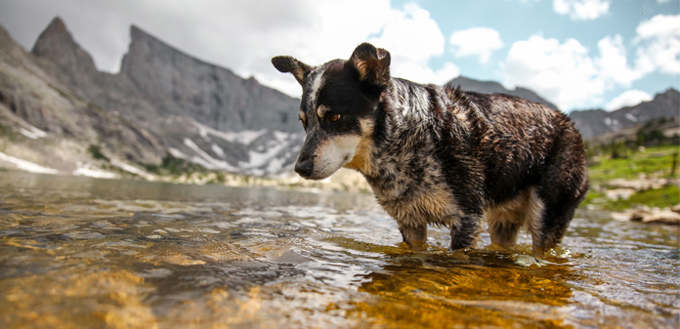
10. Finishing your Hike
At the end of your hike don’t forget to praise your dog for their good behavior. Give them something to eat and drink before you head home and take the time to give them a quick check over. Look for cuts, scrapes, and other injuries, as well as ticks and other small critters that might have decided to hitchhike on your dog. Ticks are a major concern because they carry Lyme disease, if you find them on your dog, take a few minutes to check yourself for bites too.
You May Also Like: Tick Repellent for Dogs
While hiking is a great activity for you and your dog, it is not one you should enter into unprepared. However, by following our top 10 tips above, you can enjoy your hike knowing you are well prepared for every eventuality.
Related Post: Best Dog Tents
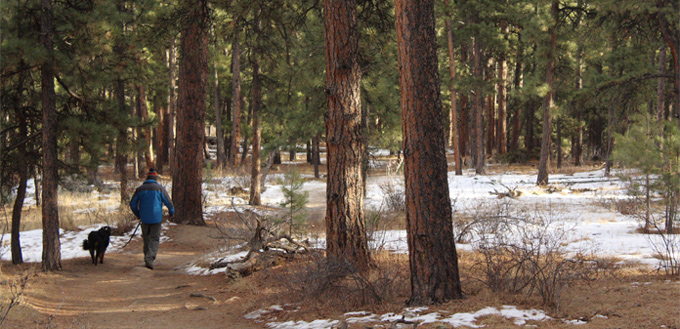
Sources:
- Hiking with Your Dog, PetMD
- Amy Paturel, Running, Hiking, and More with Your Dog, WebMD



